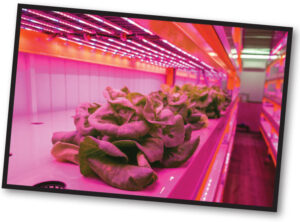
Innovation is everywhere in agriculture and irrigation. Unique research is being conducted at universities and in organizations, much of it with a goal of finding ways for production agriculture to be more efficient with natural resources such as water. Irrigation Today looked for some of today’s most interesting research projects. Here are a few of what we found. Keep watch for these on the horizon.
 Every time you eat your favorite spicy chicken sandwich, you might be contributing to efficient irrigation.
Every time you eat your favorite spicy chicken sandwich, you might be contributing to efficient irrigation.
Auburn University College of Agriculture researchers are working on ways to find and utilize alternative water resources for irrigating crops, and they believe poultry wastewater can meet this demand. Wastewater resources are rich in nutrients, specifically nitrogen and phosphorus. When these are combined, they can improve the growth of food crops. And the poultry industry is a major generator of nutrient-rich wastewater.
The Auburn research team has received a four-year $499,577 grant from the National Institute of Food and Agriculture to study the possibility and challenges of using poultry processing wastewater for irrigating in controlled-environment agriculture.
 Apparently, scientists have managed to engineer spinach plants that are capable of sending emails.
Apparently, scientists have managed to engineer spinach plants that are capable of sending emails.
Engineers at MIT have transformed the roots of spinach plants into sensors that are capable of detecting materials, such as the presence of nitroaromatics, in groundwater. When spinach roots detect the presence of nitroaromatics, the carbon nanotubes within the plant leaves emit a signal. This signal is then read by an infrared camera, sending an email alert to the scientists.
This experiment is part of a wider field of research that involves engineering electric components and systems in plants. While the purpose of this experiment was to detect explosives, the scientists believe it could be used to help warn researchers about groundwater pollution, drought and other environmental conditions.
 It takes a lot of ranch dressing to hide wilted, discolored lettuce.
It takes a lot of ranch dressing to hide wilted, discolored lettuce.
Lettuce is the third-most-consumed vegetable in the United States, but much of the produce is not marketable because the leaves are perishable and discolor after harvest. As a result, an estimated 46% of head lettuce and 55% of fresh romaine and leaf lettuce is wasted.
The Foundation for Food and Agriculture Research is providing a $2,591,231 grant through its Precision Indoor Plants Consortium to prevent discoloration in indoor-grown lettuce, while increasing lettuce yield and leaf quality. Researchers are conducting growth experiments in an indoor environment where they can control changes in lighting, heat, humidity, fertilizers, irrigation and other factors.
8280 Willow Oaks Corporate Drive | Suite 630 | Fairfax, VA 22031
Tel: 703.536.7080 | Fax: 703.536.7019
HOME | ABOUT US | ADVERTISE | SUBSCRIBE | CONTACT | PRIVACY POLICY | IA ANTITRUST STATEMENT